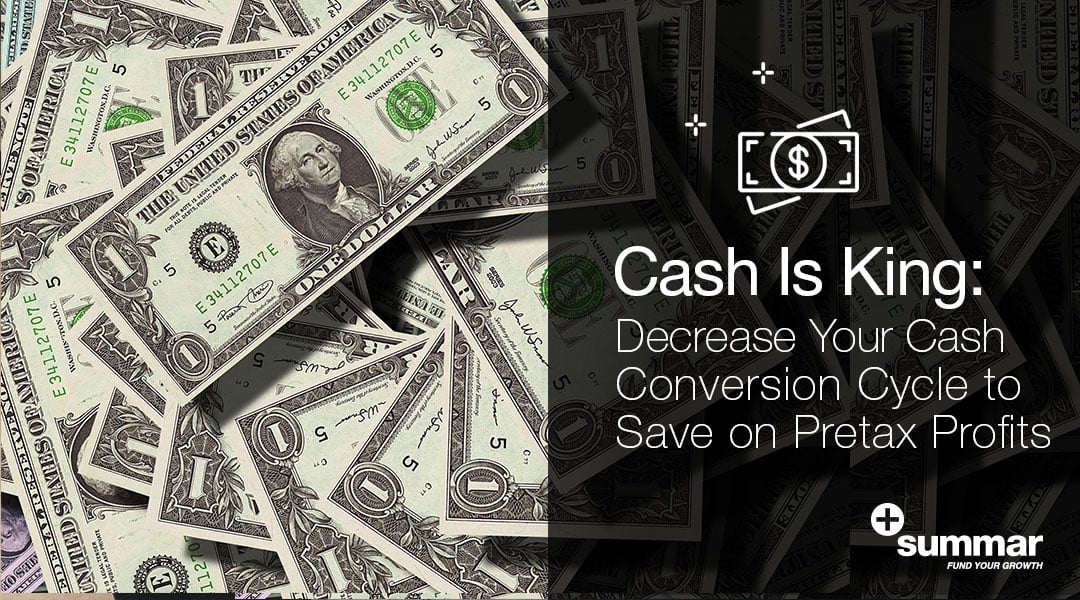
At business school I was taught that cash is king. Here at Summar we definitely see our clients living by this motto. Yet we see a lot of small and medium-sized enterprises who don’t go through the trouble of calculating how much savings they would make from reducing their cash conversion cycle through either factoring (reduce your days receivables) or supply chain finance (extend your days payables). This is why I want to show you a quick and simple example of the benefits of reducing your cash conversion cycle by one single day.
The interval between the cash payment to your suppliers to fill in inventory and the receipt of cash from your customers must be financed. The longer the time between these two events, the more interest you must pay on capital from a lender, an interval that must be covered with your own working capital. Thus the entrepreneur’s goal must be to shorten the cash conversion cycle, since with each day that the cycle is decreased, the daily interest cost saved goes entirely and directly to pretax profits. It is important to underline that a lender in this context can be a third party (i.e. a bank), your suppliers or clients who charge you interest based on pre-negotiated credit terms.
Let’s explore the concept with the following example:
| Days Inventory | 40 |
| Days Payable | 40 |
| Days Receivable | 35 |
| Annual Revenues | $ 2,000,000.00 |
| Gross Profit | 30% |
| Cost of Debt | 5% |
| Cash conversion cycle | 35 |
To determine the savings from reducing the cash conversion cycle by one day the following calculations should be made:
| Determine the company's daily revenues: | |
| $2,000,000/ 365 = $5,479.45 | |
| Determine the cost of goods sold (COGS): | |
| 1 - 0.30 = 0.70 or 70% | |
| Determine the COGS for one day of revenue: | |
| 0.70 x $5,479.45 = $3,835.62 | |
| Determine the cash needed to cover 35 days of COGS: | |
| 35 x $3,835.62 = $134,246.58 | |
| Determine interest expense on cash needed to cover 35 days of COGS: | |
| 0.05 x $134,246.58 = $6,712.33 | |
| Savings from reducing cash conversion cycle by 1 day: | |
| $6,712.33 / 35 = $191.78 | |
As you can see from this exercise, for every day that the gap is reduced, the savings of roughly $192 will go directly to profits before taxes, therefore, increasing your company’s cash flow. For example, Accurate Metal Fabricators, a Florida-based kitchen-cabinet manufacturing company, receives discounts for immediate payment to its suppliers that exceed the cost of factoring[1]. Hence, reducing the cash conversion cycle through factoring allows Accurate Metal Fabricators to have enough cash to make prompt payments to their suppliers, whose discounts outweigh the cost of factoring their invoices. An unknown economist is known to have said that “Cash flow is more important than your mother”. Although this may sound a little far-fetched, cash flow is considered as one of the four pillars of any company along with culture, leadership, and innovation.
[1] Steven Rogers. Entrepreneurial Finance: Finance and Business Strategies for the Serious Entrepreneur. McGraw-Hill. Third Edition. 2014.
